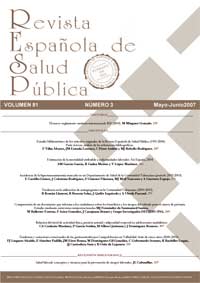Differences in disability-free life expectancy by gender and autonomous regions in Spain
Abstract
Background: Improvement of population health is the main aim and an important challenge for the health system. To monitor the population health indicators like disability-free life expectancy (DFLE) have been implemented. The purpose of this paper was to analyze the geographical distribution of DFLE according to autonomous regions in Spain. Methods: Data of mortality, population and disability for the year 1999, provided by the National Institute of Statistics (INE), were used. To calculate DFLE by gender and region we used the Sullivan method that weights the expected time to live according to the status of disablement of the population. The standard error of DFLE, the expectation of disability and the proportion of time lived free of disability have also been estimated. Results: In 1999 the DFLE at birth in Spain was 68.5 year for men and 72.2 years in women. Men lived proportionally more time free of disability than women (91% versus 87.7%) with an expectation of disability of 6.8 and 10.1 years respectively. Variability among regions was higher in DFLE than in life expectancy (LE). The regions with highest LE are not always those with the highest proportion of time lived without disability. Conclusions: Highest life expectancy does not always mean best health as it has been assumed currently. The DFLE indicator is a useful tool to show health status differences among the Spanish population.Downloads
Published
2008-03-14
Issue
Section
ORIGINALS

